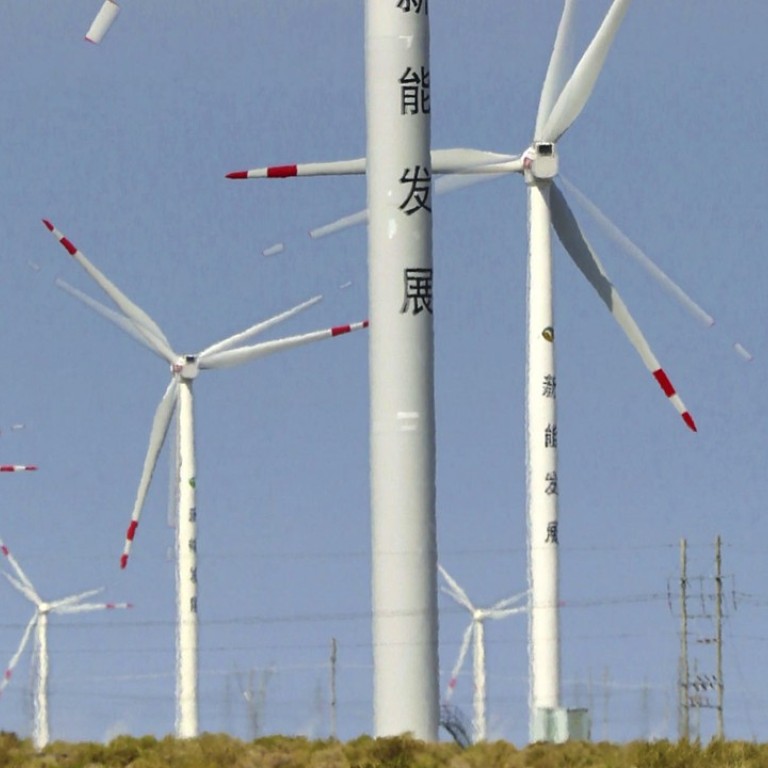
Gone with the wind? China determined to end wind power subsidies by 2020
First batch of wind farms approved that will not benefit from higher tariffs for their electricity relative to those of coal-fired generators
Beijing has approved the nation’s first ever batch of wind farms with power prices at parity with coal fired generators, signalling a resolve to do away with subsidies for wind projects by 2020.
The 13 wind farms with a total capacity of 707 megawatts have been given the green light for construction, the National Energy Administration said in a statement on its website on Thursday.
The scale is small relative to the 149,000MW installed nationally at the end of last year.
They are all located in northern China, which has the nation’s richest renewable energy resources.
Just over half of the capacity is in Hebei province, with the rest in Gansu and Heilongjiang provinces, besides the Ningxia Hui and Xinjiang Uygur autonomous regions.
The pilot scheme aims “to sufficiently utilise wind resources in various regions, push for new wind energy technology applications, raise competitiveness of wind power and promote healthy sustainable development,” the administration said.
The local power distributor is required to buy all of the output from the new wind farms.
That is something of a privilege, since most wind farms in northern China suffer from substantial wind “curtailment” – power generated but not dispatched to the grid because of bottlenecks and excess power supply.
However, their developers must accept that the projects will not qualify for any subsidies – currently enjoyed by other projects – in the form of higher power tariffs relative to the benchmark levy for coal fired power set by the state.
They will also not be allowed to enter into the “green certificate” trading and subsidy scheme, which has been operating on a voluntary, trial basis since July and will become mandatory this year.
The scheme requires certain polluters – including coal-fired power generators – failing to meet clean energy development thresholds to buy “certificates” from owners of renewable energy plants sanctioned by the authorities.
It was launched to widen the source of funding for subsidies, so as to ease the growing financial burden borne by power consumers.
Wind farm operators currently have to wait for two years or longer to receive the subsidies in arrears, which have snowballed to over 60 billion yuan as the number of renewable energy projects has surged. Dennis Ip, the head of utilities and renewables research at Daiwa Capital Markets, said the first batch of so-called grid parity wind farms is small in scale and would only be economically viable in some wind-rich regions.
“But the [industry] leaders should want to join [the scheme] to prepare themselves to achieve and maintain their cost advantage, as grid parity is an inevitable trend for the sector,” he said.
“The central government has been very clear about its goal to achieve grid parity for wind power by the end of 2020.”

